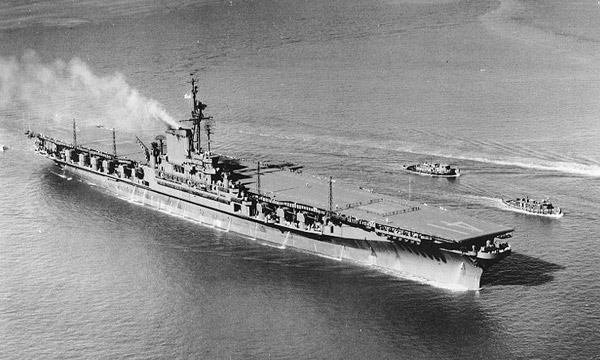Midway-class
Summary
| Origin country | 🇺🇸 United States |
| Category | Aircraft carrier |
| Subtype | Fleet carrier (World War II) |
| Manufacturer | Newport News Shipbuilding, New York Navy Yard |
| Year commissioned | 1945 |
Description
The Midway-class comprised three United States Navy aircraft carriers including USS Midway, USS Franklin D. Roosevelt, and USS Coral Sea. These carriers were parts of the CVB-41-class vessels initiated from a 1940 design study that aimed to incorporate an armored flight deck into carriers the size of the Essex class. The analysis at the time predicted a reduction in the air group size to 64 aircraft, as opposed to the 90-100 for the Essex-class fleet carriers. Influenced by the British Royal Navy's experiences, the design factored in the robustness of armored flight decks through WW2's combat scenarios.
This class of carriers featured a heavily armored flight deck of 3-1/2-inch Special Treatment Steel (STS) and a subdivided hangar into compartments to confine damages in the event of explosions or fires. They departed from traditional US Navy designs by retaining the hangar deck as the "strength deck" and using an armored flight deck as part of the superstructure. The vessels' internal layout resulted from the Montana-class battleship, with extensive use of electric arc-welding improving structural weight efficiency.
The Midway-class carriers were the largest during their time, capable of supporting more aircraft (up to 130) than any other U.S. carrier. Despite their size, which allowed the accommodation of larger jet aircraft, the carriers had some operational limitations. They experienced cramped conditions internally, had a low freeboard that struggled with heavy seas, and could not transit the Panama Canal due to their beam width.
During the 1950s, to cope with technological advances and new jet aircraft, Midway and Franklin D. Roosevelt underwent SCB-110 modernization, which included angled flight decks and steam catapults. Coral Sea received a similar but slightly different upgrade under SCB-110A. The trio served during the Vietnam War, executing multiple combat deployments in the Gulf of Tonkin.
Costly and extensive modernization in the late 1960s was undertaken only on Midway due to its exorbitant price. As the 1970s continued, the signs of aging on Franklin D. Roosevelt and Coral Sea were evident, with limitations in their air wings preventing them from operating newer, larger fighter aircraft like the F-14 Tomcat. Eventually, Franklin D. Roosevelt was decommissioned.
The 1980s saw Ronald Reagan's defense initiatives providing updates to Coral Sea and deploying F/A-18 Hornets to both Coral Sea and Midway. Attempts to increase freeboard on Midway through hull bulges led to problematic seakeeping traits and were not replicated on Coral Sea—the last of the class to be decommissioned in 1990. USS Midway finally saw action in the Gulf War before both ships ended their service in the Navy.
Technical specifications
| Midway | |
|---|---|
| Displacement | 45000 tons |
| Crew | 4,104 members |
| Width | 37.0 m (121.4 ft) |
| Length | 295.0 m (967.8 ft) |
| Air Park | 46 F6F Hellcat fighters, 36 SBD-2 Dauntless dive bombers, 18 TBF Avenger torpedo bombers (up to 137 aircrafts theoretically) |
| Propulsion | 4 turboprops with a total power of 212,000 hp - 4 propellers |
| Armament | 18 127 mm guns + 84 40 mm Bofors guns + 68 20 mm AA guns |
| Maximum speed | 33 knots |
Photo of Midway class
